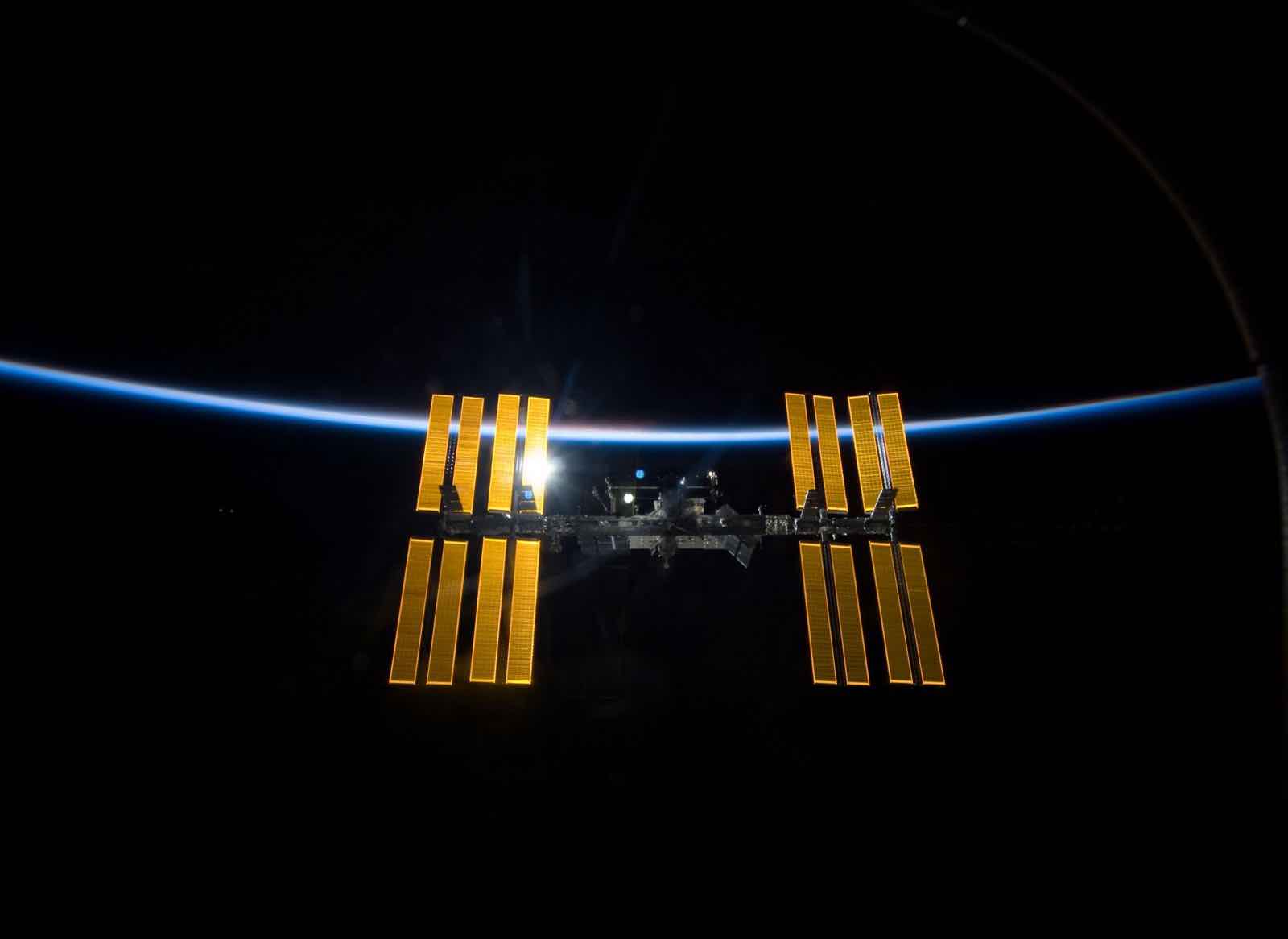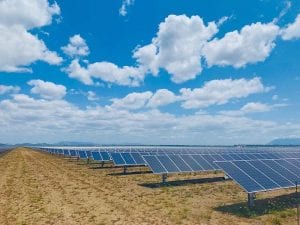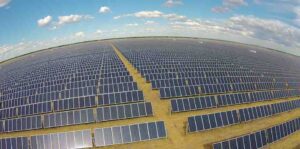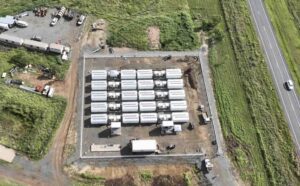Solar farms in space are not quite science fiction anymore, after researchers at Queen’s University in Belfast tested a prototype that was able to “steer” a wireless energy beam across a lab to turn on a light.
The tests were made for UK company Space Solar, which is working on a plan to put into orbit a 1.7km solar farm some 37,800km above the Earth, and send the harvested sunlight back down via a high frequency microwave beam.
The solar farm, which Space Solar has dubbed CASSIOPeiA, needs to rotate to constantly fix on the sun while still sending power to a receiver on Earth.
The Queen’s University scientists proved that the directional control system works – an offshoot of extensive research already taking place at the university into control systems for drones once they’re out of sight.
Space Solar says it plans to have its farm in space around 2030, and is in talks with Elon Musk’s SpaceX to use its Starlink rocket for the 68 launches that will be required to get the required parts into space, to then be assembled by robots.
The race into space
The concept of putting solar farms in space is gaining cachet, with the similarly-named Solar Space Technologies in Melbourne pitching a similar idea for an 18 gigawatt (GW) solar farm by 2027 being just one of 50 organisations and companies around the world floating the idea.
Among those are the Japanese space agency, which wants to be using solar space power as soon as next year, and the European Space Agency which has similar plans albeit with a less ambitious timeline.
The concept they’re using is the “power beam”, a technology which uses high frequency microwaves to transmit energy that was first tested in the 1950s.
Last year, researchers from the California Institute of Technology successfully beamed solar power from space to Earth using the Space Solar Power Demonstrator (SSPD-1), which was launched into space in January.
The wireless power transfer was demonstrated by MAPLE, short for Microwave Array for Power-transfer Low-orbit Experiment, an array of flexible lightweight microwave power transmitters which are driven by custom electronic chips built using low-cost silicon technologies.
MAPLE is able to beam energy to specific locations on Earth but also demonstrates the fundamental principles for space-based solar generation to be successful – arrays which are lightweight so as to minimise the amount of fuel needed to send them into space, and which are also flexible enough to be packaged onto a rocket, while using low-cost technologies.
The drawcard is a source of energy in a location that can capture some 13 times more energy than on Earth, that is not dependent on weather and works during early morning or evening hours.
Challenges abound, but sophons aren’t one of them
Despite the bones of space-to-Earth energy being put in place back in the 1950s, there are still many hurdles to overcome to get this up and running.
Not least is social acceptance.
The power beam is not quite a laser – a microwave version is called a “maser” – but comes with risks around high temperature.
These risks are amusingly addressed in Space Solar’s FAQs; “Can it be used as a death ray / beam weapon?”
The company says no, the system cannot be converted into a weapon because the aperture size of the transmitter in space and the receiving antenna are sized to keep the maximum beam intensity at or below 245 W/m2, or one quarter of the intensity of sunlight at midday, which is around 1,000 W/m2.
“Lacking a common power bus, it would not be possible to re-purpose the power distributed across the platform to power a separate laser or particle weapon,” the company says.
Other difficulties include the cost of getting the parts into space and the ability of the materials to withstand the harsh conditions of a space environment, such as solar flares.
And in order to create an almost 24/7 source of energy, the satellite has to be in geostationary orbit, about 37,000km above the Earth which is higher than satellites are usually sent to.









